-
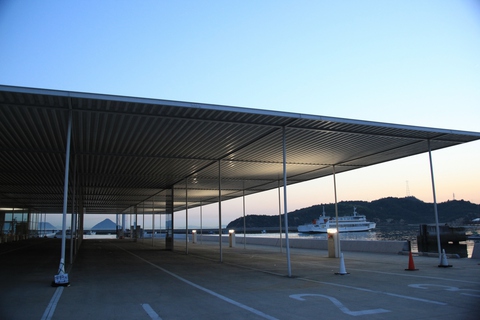
1Naoshima
Naoshima is located some 13 kilometers north of the city of Takamatsu in Kagawa Prefecture and about 3 kilometers south of Tamano in Okayama Prefecture on the Honshu side. Sixteen kilometers in circumference, it is the central island in the 27-islet Naoshima archipelago and has a population of around 3,000, which traditionally subsisted on fish and seaweed farming and later on copper refining. These and other industries are clustered in the northern part of the island, whereas the southern side has in recent decades become famous for its wealth of art-related facilities. Operated by Benesse Art Site Naoshima, these include the Benesse House Museum, the Chichu Art Museum, and the Lee Ufan Museum.
In the Honmura district, where many traditional homes built in the Edo period (1603–1867) remain, old houses have been restored and artists invited to turn these structures into works of art that draw on the history of the community. These efforts have taken place under the auspices of the Art House Project, another Benesse Art Site Naoshima undertaking. There are seven such artworks in Honmura, created by contemporary artist Miyajima Tatsuo (b. 1957), photographer and architect Sugimoto Hiroshi (b. 1948), American artist James Turrell (b. 1943), and others. Open-air art is also plentiful on Naoshima, where visitors can admire works by, among others, Yayoi Kusama (b. 1929), whose bright yellow pumpkin sculpture sits alone at the end of an old pier. Even many of the island’s public facilities were designed by renowned artists or architects. The Marine Station Naoshima ferry terminal is the work of Pritzker Prize-winning architectural firm SANAA, founded by Sejima Kazuyo (b. 1956) and Nishizawa Ryue (b. 1966), and Naoshima’s communal bathhouse was created by contemporary artist Ohtake Shinro (b. 1955).More Details
-
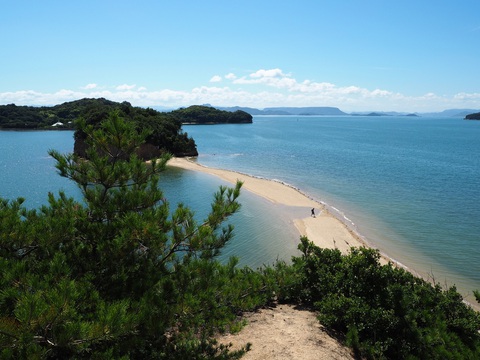
2Angel Road
The sand road appears and disappears with the high and low tides. There are four islands connected from Bentenjima, which is next to Shodoshima.
You can walk across the sand road twice a day at low tide, once in the morning and once in the afternoon. It is said that if you walk across holding the hand of your special person, an angel will descend and grant your wish. This site is recognized as one of Japan’s ‘Lovers Holy Lands’, a romantic spot just right for proposing.
At the shops near the Angel Road you can purchase a ‘ema’ (a plaque onto which you write your wish and leave at a shrine). There is also a selection of popular Shodoshima souvenirs like olives and somen noodles for sale.More Details
-
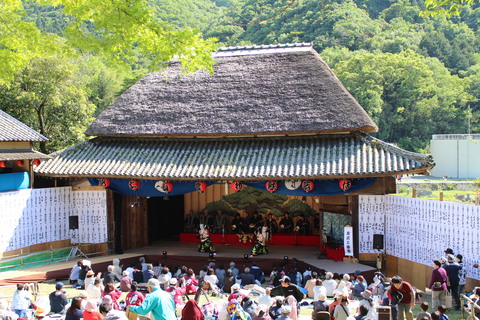
3Hitoyama Rural Kabuki
It is said that Hitoyama Kabuki got its start in 1686, when a small shack was first built here for theatrical performances to celebrate the completion of Kaeruga ike, a pond that was constructed to overcome a water shortage. Since that time, many kabuki performances have been offered up to the Hachiman Shrine, where the theater is located. The building is a representative example of a Shikoku stage.
The current stage was built in 1900, as a slightly larger version of a previous building that was destroyed by a typhoon four years earlier. The theater has all the characteristic features of a kabuki house: hanamichi, revolving stage, lift, the abyss (naraku), grapevine trellis (budodana), ceiling, dressing room, green room, head actor’s and dressing room.More Details
-
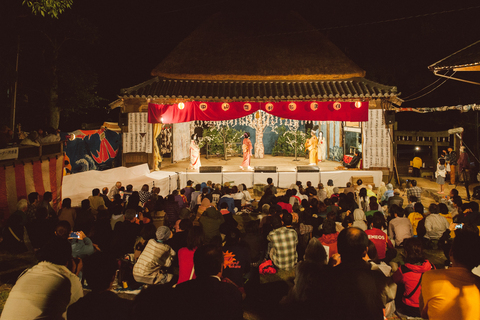
4Nakayama Rural Kabuki
Nakayama Rural Kabuki is a traditional kabuki theater of Shodoshima Island, dating from the Edo period (1603–1868), that was performed as an offering to the local Kasuga Shrine. It is said that the island landlords, after praying at the Ise Shrine and while waiting for good seafaring weather, enjoyed kabuki in the Kamigata area (Kyoto and Osaka) so much they brought it back home. What makes the kabuki here unique is that, unlike professional kabuki performances, the actors, narrators (gidayu), makeup artists, and stage carpenters are all local residents.
The stage of Nakayama Kabuki is set in a traditional thatched-roof Japanese house, equipped with several kabuki theater devices.
Nakayama Rural Kabuki was designated as a Kagawa Prefecture Intangible Folk Cultural Property in 1975, and its stage was registered as a National Tangible Folk Cultural Property in 1987.More Details
-

5Shodoshima Olive Park
This Greek-style park is constructed on the top of a hill overlooking the Seto Inland Sea.
The spacious grounds are planted with about 2,000 olive trees and more than 130 different types of herb. You can use these to make your own sachet and potpourri at the shop called Herb Craft-kan. There are many other herb-related items for sale at the Herb Shop Pukoriko.
The central building has a restaurant where you can enjoy dishes using olive, and there are also many herb-related items collected here ― great for souvenir shopping.
There are many symbols of the friendship between Shodoshima and its Greek sister city Miros, including the Greek windmill, and some monuments. The natural hotspring ‘Sun Olive Hotspring’ is also recommended.More Details
-
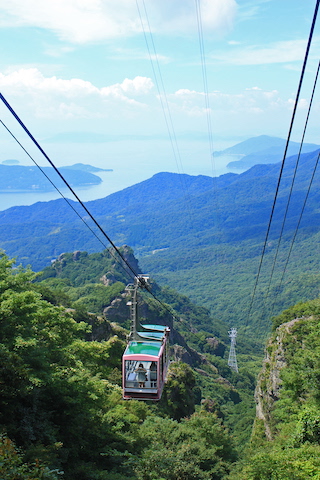
6Kankakei Gorge
Kankakei Gorge is situated in the central part of Shodoshima Island in Kagawa Prefecture. About 14 million years ago, intense volcanic activity in this region formed a mountainous terrain, which was then exposed to erosion and weathering over thousands of years. The terrain was eventually shaped into a geologically diverse gorge that has been designated a Place of Scenic Beauty and chosen as one of the three most beautiful gorges in Japan.
The summit of Kankakei Gorge is accessible either on foot, by car, or by Kankakei Ropeway, which will take you from Sanroku Koun Station located at the bottom of the gorge to the summit, offering panoramic views of the surrounding landscape and the Seto Inland Sea. The scenery changes from season to season with vivid cherry blossoms in spring, lush greenery in summer, colorful maple leaves in autumn, and glimmering snowcaps in winter. The ropeway normally departs every 12 minutes (or every 6 minutes during peak travel seasons), and the ride to the summit takes about 5 minutes. The service is available year-round.
Once you get to the top, you can head to a viewing platform to enjoy the breathtaking panorama. There is a restaurant that serves olive beef croquette burgers and a gift shop that carries a variety of Shodoshima Island's signature products, from somen noodles to olive oil and soy sauce. You can also try a unique beverage called Momiji Cider, which got its name from the vivid red color of maple leaves. Finally, take a walk down one of the hiking trails to explore the area and visit some of the truly photogenic spots the gorge has to offer.More Details
-
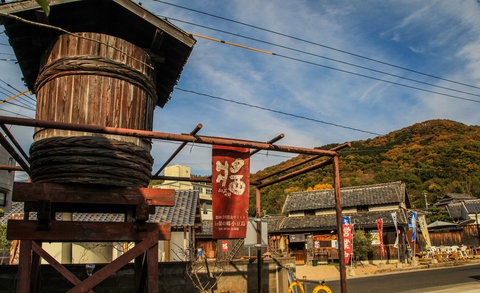
7Soy Sauce Village
Shodoshima Island’s soy sauce factories are concentrated in an area called Soy Sauce Village, where warehouses and factories built during the Meiji era (1868-1912) line the road from Yasuda to Sakate Port. The buildings, still in use today, create a historic atmosphere with their traditional charred wood cladding and old plaster walls.
Soy sauce manufacturing began on Shodoshima in the 16th century, after persons coming to quarry stones for Osaka Castle brought the recipe. The industry reached its height at the turn of the 20th century, with over 400 factories operating. Currently, about 20 factories are still running.
Unlike soy sauce produced elsewhere, Shodoshima soy sauce is unique for the use of traditional wooden barrels during the fermentation process. Many factories offer tastings—discover and be amazed by the rich flavor achieved through centuries-old techniques. Some locations even sell soy sauce ice cream, which might surprise you with its harmony of flavors. We also recommend Shodoshima soy sauce as a souvenir.More Details
-
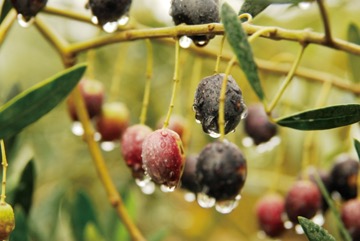
Flavors of Shodoshima
Shodoshima is the second-largest island in the Seto Inland Sea and has a population of just under 30,000. It benefits from a relatively warm and dry climate and clean groundwater. These weather conditions, along with Shodoshima’s location in the eastern part of the sea, near its busiest shipping lanes and the mercantile city of Osaka, historically contributed to making the island a major food producer. The comparatively calm Inland Sea has been crucial in trade since ancient times, connecting Osaka with Kyushu as well as with faraway lands including the Korean Peninsula and China.
Three of Shodoshima’s most notable products are soy sauce, thin wheat noodles called somen, and olives. The soy sauce and somen industries have their origins in salt production, which flourished on the island in medieval times. During the Edo period (1603–1867), however, the salt industry on Shodoshima declined due to overproduction in other regions, collapsing demand. The islanders decided to pursue alternative uses for their salt, which became an ingredient in soy sauce and wheat noodles. As both products were made from early on in the Osaka region—soy sauce in Wakayama and somen in Nara—their adoption on Shodoshima was hardly surprising. The island’s beneficial position in the Inland Sea trade made it easy to source ingredients such as soybeans and wheat from western Japan, and the proximity to Osaka meant that demand never dried up.
Olive trees were first planted on Shodoshima in the Meiji era (1868–1912), when the Japanese government chose the island as a test site for growing imported crops because of the presumed suitability of the local climate. This decision proved successful, and Shodoshima eventually became known as the olive capital of Japan. Olive plantations cover much of the island’s hillsides and, along with the sea beneath, make for a scenic landscape that is sometimes described as Mediterranean.More Details
